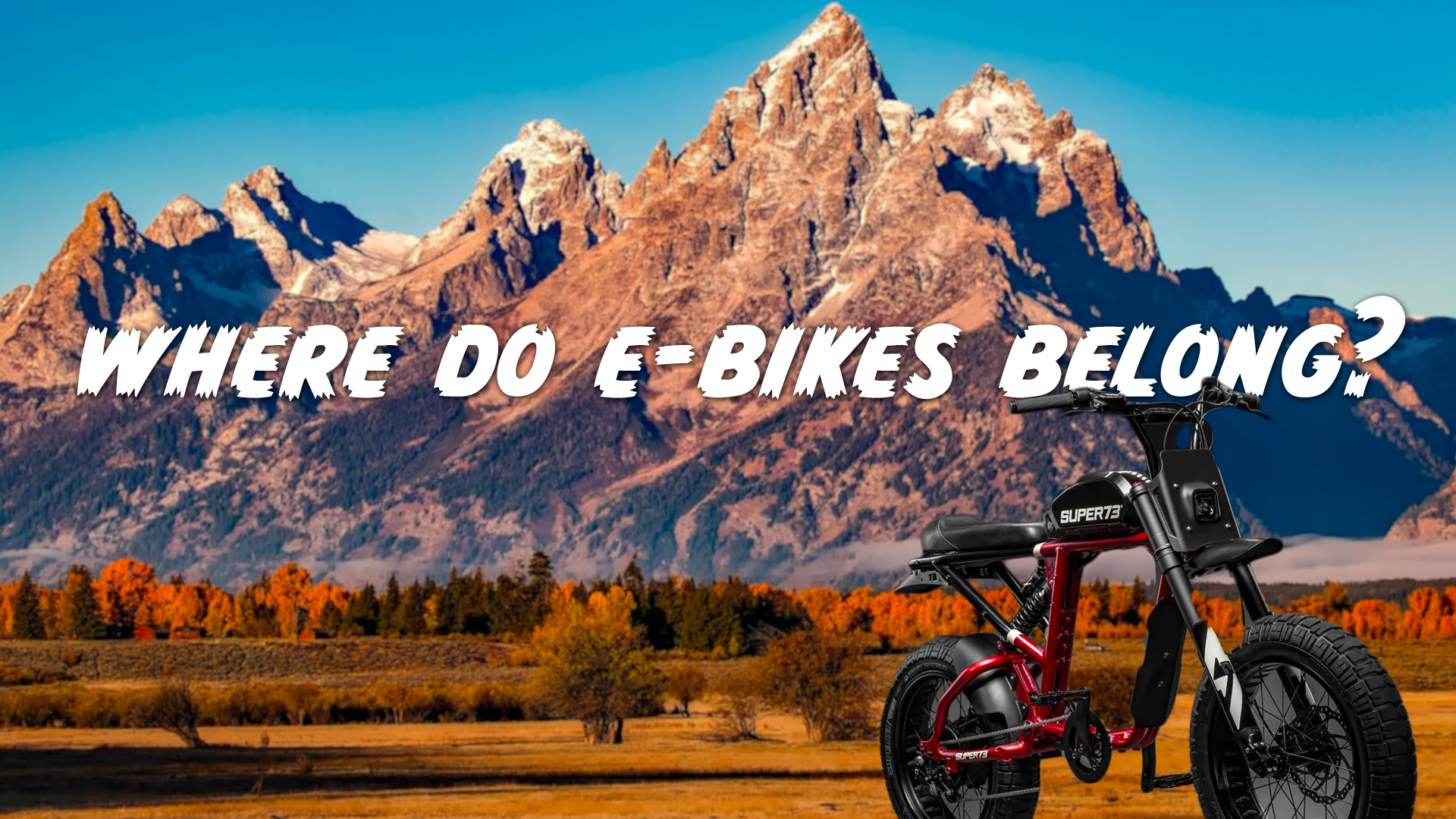They’re powered vehicles. No, they’re bicycles with some assistance. Let them on the trails. Keep them off the trails. The arguments on both sides are vocal, and the question persists. How do you classify the many different types of electric bikes currently for sale? It’s not fair to lump them into one or two classes, but the classifications created certainly need clear guidelines for the bike builders. Until that happens, the arguments will continue.
Recently, I’ve taken a greater interest in electrified forms of transportation. At the same time, I’ve also gotten into mountain biking. There’s a convergence there I didn’t expect as more and more bicycle makers are building e-bike models. These are pedal bikes that have a battery and small motor, which can be used to provide assistance while pedaling. On the mountain bike e-bikes I occasionally see on the trail, there is no throttle. It’s an assist system that makes pedaling an easier task.
Hardcore mountain bike folks initially railed against these rides. But the tide is turning and more acceptance is being found. And for good reason. An e-bike allows for more trail coverage during a riding session, but it also allows for those who may be older and not as able to get out and ride. Or those with injuries or disabilities that would otherwise make pedaling quite difficult, it allows them to hit the trails and enjoy life.
There’s another type of e-bike that’s also making news. The throttle-powered electric bike, which exists in a space somewhere above or below a moped depending on the model discussed. These have throttles but also pedals, which means they can be ridden in a pedal-assist manner or simply by using the throttle. And they can get up to good speed too, with on-road legal Class 3 versions being capped at 28 mph and having “off-road modes” that let them push the speeds far higher. These are great forms of transportation and make a lot of sense for commuters in areas where a car might not be a necessity on a daily basis. Personally, I plan on adding a Super73 RX at some point in the future. It makes for a great errand runner, work commuter, track-side pit bike, and general electric fun mobile.
And it’s Super73 that wants to be part of the discussion helping shape electric bike classification and policy.
Recently, e-bikes made news because they were given the green light to be ridden through national parks. Some rejoiced at this notion, while others rolled their eyes and balled their fists. Some believe that these bikes should be (and in some places, still are) classified as motorized vehicles. Thus they’re treated like dirt bikes and motorcycles. If that’s how the bikes are classified, then they are clearly not going to be allowed on trails. Other areas have given them a wider berth and reclassified the pedal-assist bikes as non-motorized, which also doesn’t make sense. There’s definitely a motor in there. It’s just not a braap-capable two or four-stroke.
So how do we sort this out? Super73 wants to work alongside the PeopleForBikes organization to help lawmakers figure this out.
As one of the leading voices for the bicycle industry, the efforts of PeopleForBikes at the federal, state, and local levels have helped to push for bicycle and e-bike legislation reform, leverage private and public funding for bicycle infrastructure projects, and serve as a valuable resource for the bicycle and e-bike community. As a result of its advocacy, the National Park Service, Bureau of Land Management, Fish and Wildlife Service, and Bureau of Reclamation proposed new regulations (“rulemaking”) in early April regarding e-bike use on federal lands. If adopted, the proposed regulations could lead to the following:
-
E-bikes would no longer be defined as motor vehicles or off-road vehicles, but have a standalone, sensible, and modern definition
-
The three classes of e-bikes would be properly defined
-
E-bike riders would have similar rights, privileges, and duties as traditional bike riders
-
Agency officials would be authorized to allow e-bikes on roads, paths, and trails where they are currently prohibited
-
Local land managers would maintain significant control, in partnership with the public, to make access decisions
I think this makes a lot of sense. And it’s smart of them to want to get this properly sorted. Then you avoid the anger on both sides, when there’s a clear understanding of what we’re dealing with bike-wise and where and how fast those bikes can go. Personally, I think certain classes of e-bike are a great tool for a day on the trails or exploring our beautiful national parks. Should we allow electric dirt bikes on the same path as hikers and traditional cyclists? Of course not. But pedal-assist bikes can help more people get out and enjoy the world around them.


Leave a Reply